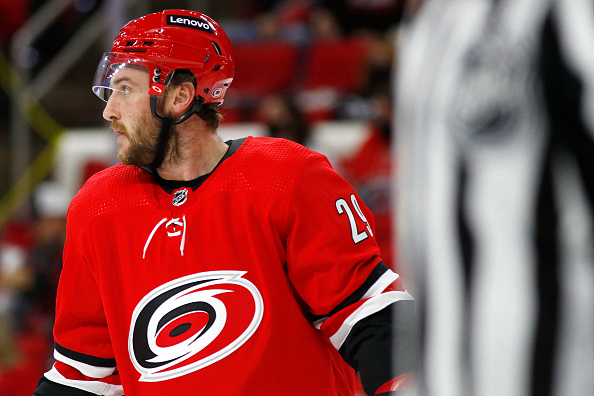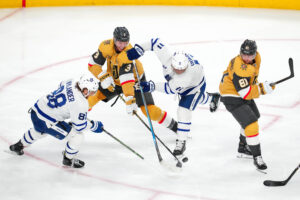NHL player development seems to always result in more questions than answers. How likely is it for a top pick to pan out? What makes a player a “steal”? Last Word On Hockey has a new series on how to properly develop prospects from all different spots throughout the draft. This week’s piece involves draft picks in the back half of the first round and how they were used early in their careers.
NHL Player Development Of First-Round Picks
In the span of 2005 through 2015, there were 84 total selections made between 16th overall and 30th overall on forwards playing in North America. Looking at all 84 forwards, they were split into different categories. Those categories were “Forwards Deemed NHL-Ready and Brought In Immediately When Ready,” “Forwards Near NHL-Ready and Brought In Immediately When Near-Ready,” “Forwards Rushed Slightly,” “Forwards Rushed,” “Forwards Forced,” “A Little Patience,” “Patience,” and “Too Much Patience.”
There were 12 forwards who fell into the fourth category, “rushed,” on the list. Of those 12 players, two made their NHL impacts in their DY+6 seasons. Those players are Stefan Noesen and Riley Nash. In this piece, we will look at Noesen’s NHL player development.
In this piece, we will be using stats from Elite Prospects (raw stats) and Hockey Reference (ice time). Additionally, the analytics we are using are as follows: even-strength offence goals above replacement (EVO), even-strength defence goals above replacement (EVD), wins above replacement (WAR) and goals above replacement (GAR). Those analytics are from Evolving Hockey (subscription required).
NHL Player Development Of Stefan Noesen
Noesen, drafted 21st overall in the 2011 NHL draft by the Ottawa Senators, came out of the OHL’s Plymouth Whalers organization. In his DY-1 season, Noesen scored just three goals and five assists for eight points in 33 games, for 0.242 points per game. That ranked 80th out of the aforementioned 84 forwards in DY-1 production. Noesen would follow that up with 34 goals and 43 assists for 77 points in 68 games, for 1.132 points per game. That ranked 44th out of those same 84 forwards in DY production. After being drafted by the Senators, Noesen would play two more OHL seasons before making the jump to the AHL. He stuck in the AHL for an additional three years before making his NHL impact.
In his DY+1 season with the Whalers, he scored 38 goals and 44 assists for 82 points in 63 games, for 1.302 points per game. That ranked 25th out of the remaining 82 forwards still outside the NHL in DY+1 production. In his final OHL season, Noesen would score 25 goals and 28 assists for 53 points in 51 games, for 1.039 points per game. That ranked 31st amongst the remaining 70 forwards still outside the NHL in DY+2 production.
AHL Time For Noesen
In his first AHL season, Noesen did not score a single point and played just two games for the entirety of the season. After being traded to the Anaheim Ducks, in what was the Bobby Ryan trade, he tore his ACL and MCL in one of his knees and missed the remainder of the season. But, he would come back the following year, his DY+4 season. He played 27 AHL games and scored seven goals and nine assists for 16 points, for 0.593 points per game. That ranked 12th out of the remaining 30 forwards still outside the NHL in DY+4 production. The reason he played under 30 games again was due to a partially torn achilles that led to missed time.
Noesen would finally have a good bill of health in his DY+5 season, playing 65 AHL games and scoring 10 goals and 22 assists for 32 points, for 0.492 points per game. That ranked 12th out of the remaining 23 forwards still outside the NHL in DY+5 production. Finally, after five long post-draft seasons, Noesen would get an extended look at the NHL level.
How Stefan Noesen Was Used
Finally, in his first real shot at the NHL, he would still have to see the AHL for parts of the season. Playing just 22 games in the minors with the Ducks affiliates, San Diego Gulls, he scored six goals and nine assists for 15 points. At the NHL level, Noesen would split between two teams, seeing himself moved once again. This time, the Ducks lost him to the New Jersey Devils via waiver claim.
Overall, Noesen played 44 games and averaged 11:08 time on ice per game. In that small role, he scored eight goals and 10 points. That’s not a great stat line, but his underlying stats reflected more value than what meets the eye. His EVO (3.0) was impressive, considering his lack of production. But what’s even more impressive is his EVD (1.9) which is at a score that is rare to hit as a rookie. With his strong even-strength metrics, Noesen’s WAR (0.8) and GAR (4.2) were pretty good.
The following season, Noesen would play exclusively in the NHL, finally. He would average 13:17 per game in the 72 games he was in. In that role, he scored 13 goals and 14 assists for 27 points. The moderate raw stats were just an indicator, yet again, to a deeper success. His EVO (5.6) was improved, as was his already impressive EVD (3.8). That led to an even better WAR (1.5) and GAR (8.0) from Noesen as well. That is a very strong analytical output.
Year Three Injuries Holds Stefan Noesen Back
In his third season playing up at the NHL level, Noesen would see just 41 total games, all in the NHL. He averaged 12:44 per game and scored three goals and five assists for eight points. But, the reason for the lack of games is the same reason he’s struggled to continue his development.
Noesen was placed on injured reserve three separate times, with an upper-body injury, where he missed five days. Then, he was placed there for an illness, where he missed 12 days. Finally, a lower-body injury landed him on IR once again, this time missing almost two months, from January 14th, 2019 to March 5th, 2019. Outside of the raw stats taking a step back after missing all that time, his analytics completely teetered off. His EVO (-4.3) was atrocious, while his EVD (0.2) barely stayed above replacement level. His WAR (-1.1) and GAR (-5.6) were terrible as well.
Stefan Noesen’s Early Career, Where Everything Went South
Noesen was well on his way to having a successful career. But then, in his first chance at professional hockey with the Ducks AHL squad, he tore his ACL and MCL. After just two games. Now, he had to take the year to rest and basically start his professional career a year late. A year late after not playing any hockey, no less. He actually did well, too. But again, he suffered a torn achilles and did not play a full year. So essentially, he played less than half of a full season due to injuries after two years.
Now, in his third professional season, his development already was falling behind other guys in his draft class, like Rickard Rakell, who was his teammate in the OHL. Rakell was drafted later in the first round by the Ducks, but had already made an NHL impact at this point.
When he made the NHL, he started off with a very limited role. He split time between the AHL and NHL, with limited ice time with the Ducks. He produced analytically, but his raw stats were not eye-opening. In his full season at the NHL level, again his raw stats were just okay, but not popping off the page. Again, it was underlying stats that showed some potential. But that potential would not be realized in year three because of injuries on injuries.
Stefan Noesen Still Sticking Around
Since that third season in 2018-19, Stefan Noesen would see just 48 games over the following three seasons, across four teams. Those teams, in order, were the Pittsburgh Penguins, Sharks, Toronto Maple Leafs, and Carolina Hurricanes. In total, he scored nine points, which included seven goals. Last year, in 2021-22, after joining the Hurricanes, he would have his best AHL season yet. In 70 games, Noesen scored 48 goals and 37 assists for 85 points. He is slated to play for the Hurricanes AHL affiliates, the Chicago Wolves, once again this year. However, if he can stay healthy and play at a high level again, maybe he gets a new chance.
Junior league stats via Elite Prospects, NHL stats via Hockey Reference, NHL analytics via Evolving Hockey
Main photo:






